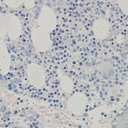Infection of Ustilaginoidea virens intercepts rice seed formation but activates grain-filling-related genes.
Palabras clave
Abstracto
Rice false smut has become an increasingly serious disease in rice (Oryza sativa L.) production worldwide. The typical feature of this disease is that the fungal pathogen Ustilaginoidea virens (Uv) specifically infects rice flower and forms false smut ball, the ustiloxin-containing ball-like fungal colony, of which the size is usually several times larger than that of a mature rice seed. However, the underlying mechanisms of Uv-rice interaction are poorly understood. Here, we applied time-course microscopic and transcriptional approaches to investigate rice responses to Uv infection. The results demonstrated that the flower-opening process and expression of associated transcription factors, including ARF6 and ARF8, were inhibited in Uv-infected spikelets. The ovaries in infected spikelets were interrupted in fertilization and thus were unable to set seeds. However, a number of grain-filling-related genes, including seed storage protein genes, starch anabolism genes and endosperm-specific transcription factors (RISBZ1 and RPBF), were highly transcribed as if the ovaries were fertilized. In addition, critical defense-related genes like NPR1 and PR1 were downregulated by Uv infection. Our data imply that Uv may hijack host nutrient reservoir by activation of the grain-filling network because of growth and formation of false smut balls.




